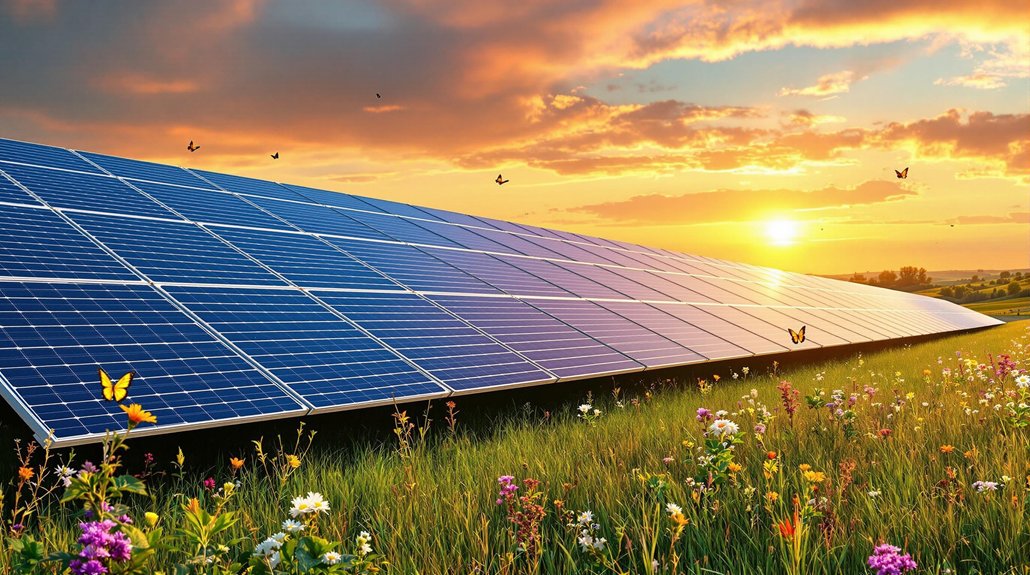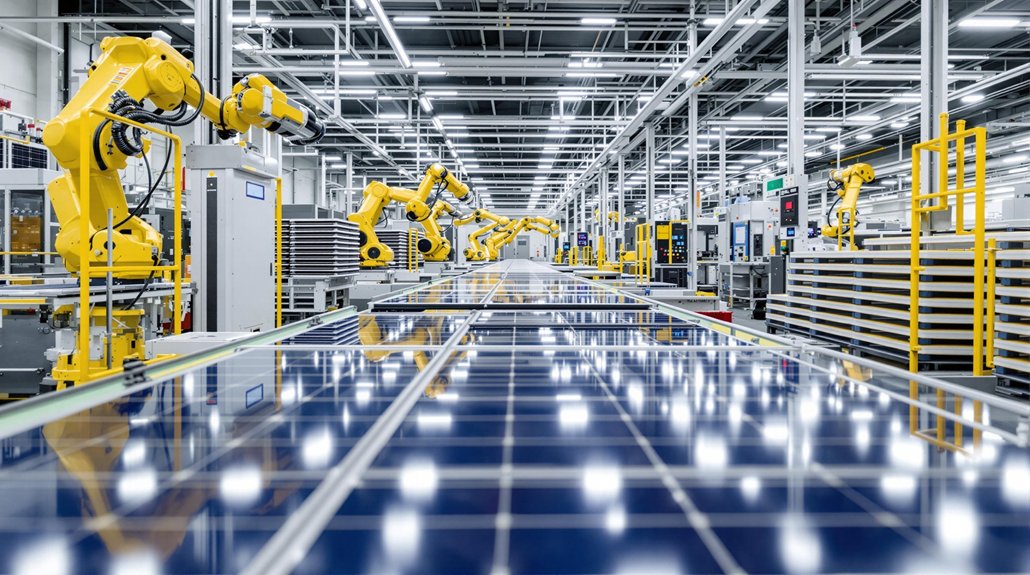Wind turbines pack serious power into four main parts. The massive rotor blades, stretching over 80 meters, slice through air like giant knives. The nacelle, roughly the size of a school bus, houses the turbine’s mechanical guts. A tall tower, reaching up to 120 meters, holds everything up high where the wind blows strongest. Deep concrete foundations keep these giants firmly planted. There’s more to these clean energy monsters than meets the eye.

Wind turbines stand like mechanical giants across landscapes worldwide, their massive blades slicing through the air to generate clean electricity. These behemoths aren’t just randomly assembled pieces of metal – they’re sophisticated machines with distinct components working in perfect harmony.
Modern wind turbines tower over us like colossal sentinels, their sleek blades carving through wind to power our sustainable future.
The rotor blades, stretching over 80 meters long on larger models, capture wind energy and transform it into rotational motion. They’re typically crafted from fiberglass or carbon fiber composites, and yes, three is the magic number when it comes to blades per turbine. The blades feature an aerodynamic airfoil shape to maximize their efficiency in capturing wind energy. With proper maintenance, these turbines can deliver sustainable power generation for over two decades. These innovative machines help create local job opportunities while providing clean, renewable energy.
Perched atop these towering structures sits the nacelle, a bus-sized compartment that houses the turbine’s mechanical guts. Inside this oversized toolbox, you’ll find the generator, gearbox, drive train, and brake system. The nacelle isn’t just a static component – it actually rotates to face the wind, thanks to its yaw system. Pretty neat for something the size of a school bus.
The tower, usually reaching heights between 80 and 120 meters, does the vital job of holding everything up. Made from tubular steel or concrete, it’s basically a glorified support beam with an internal ladder or lift for maintenance crews. Let’s be honest – nobody’s taking the stairs if they can help it.
Down at ground level, massive concrete foundations anchor these wind-catching giants. These hidden heroes can spread 15-20 meters in diameter, varying in depth depending on what kind of soil they’re dealing with.
The generator, tucked away in the nacelle, converts all that spinning motion into electricity, with capacity ranging from 2-5 MW for onshore turbines. Offshore models? They’re show-offs, pushing past 10 MW.
The gearbox connects the rotor to the generator, using a planetary gear design to boost those lazy rotor speeds into something useful. Some newer models skip the gearbox entirely with direct drive systems.
Meanwhile, sophisticated control systems monitor everything – wind conditions, performance metrics, power output. They’re like the turbine’s brain, constantly adjusting and tweaking to maximize efficiency.








